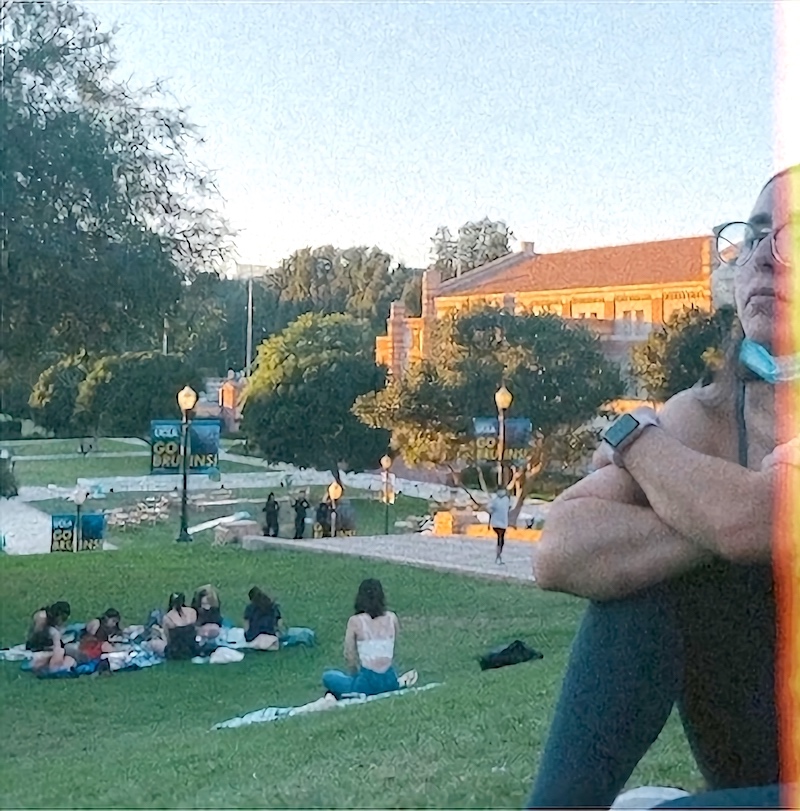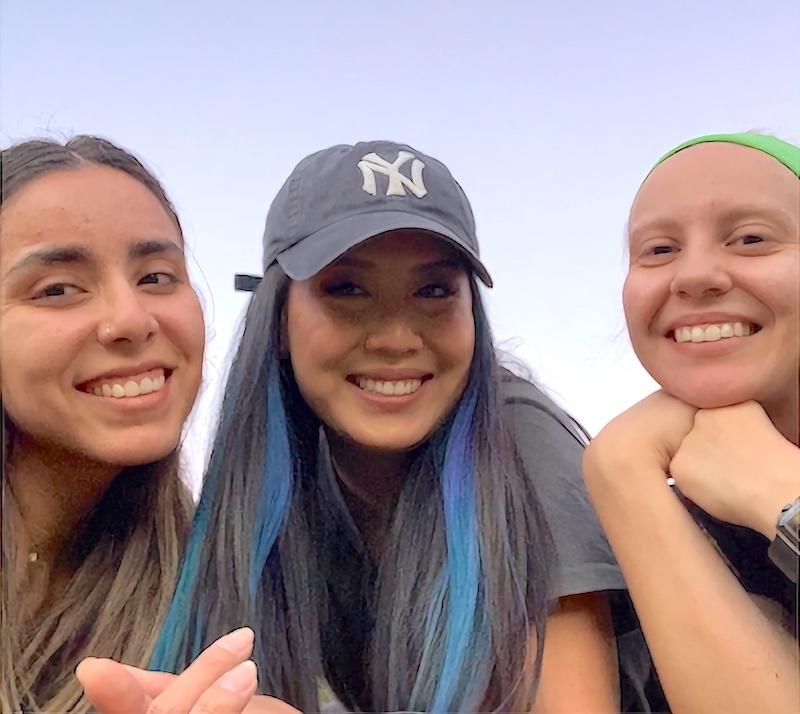Student Blog
Teresa
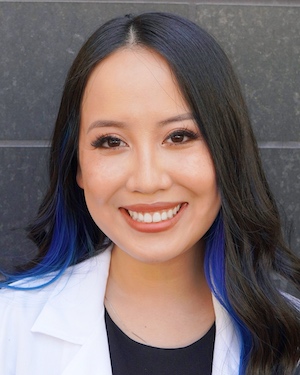
8 things I 8 this year that I used to love, but now h8 ⟩
December 22, 2021, by Teresa
As we heard more and more about a novel “coronavirus” with each day, I was working full-time as a rehab aide at a nursing home — which at the time, were severely ill-equipped to handle a pandemic with respect to manpower and physical resources. One morning in April 2020, I woke up for another day of work when I realized that overnight, I had been robbed of 2 out of the 5 primary ways I interact with this world.
The anosmia (loss of smell) and ageusia (loss of taste) lasted about 3-4 weeks, but fast forward to 20 months later, nearly TWO YEARS, and I still experience parosmia and dysgeusia, which means those 2 senses returned but that my perception of how things taste and smell is incorrect compared to my memory of them. So without further ado, here are 8 things I have consumed during this pandemic that I used to love, as well as some tips and tricks I’ve picked up along the way so I can continue to enjoy them as I adapt to this new and strange sensory experience.
- I’ll start off with the one that makes me saddest — potatoes 🥔. Yup, that wonderful versatile vegetable. Like a diamond, she thrives under pressure — she can be mashed, she can be fried, she can be baked and loaded. We all know and love her! My comfort food was always french fries, so you can imagine my disappointment when my teeth first pierced through that crispy exterior and I immediately wanted to spit it back out. Where I used to taste salty, crunchy goodness, I now perceive an enhanced chemical flavor of starch. My workaround? Sweet potato fries! My perception of sweet foods didn’t change much, so sweet potatoes still taste the same and even though it’s not exactly the same, I still get the oral gratification from the textures.
- Speaking of enhanced chemical flavor, you know that very distinct artificial banana flavor they put in candy, like with banana-flavored Laffy Taffy? Well, all bananas 🍌 taste like that to me now. While it’s not the same, I am reminded of what a banana used to taste like when it’s mixed among other fruits, like in a smoothie or açaí bowl! The banana flavor is still most prominent in those mixtures, but the “artificial” flavor is dampened some by other fruits, yogurts, and juices.
- If I could only have one food for the rest of my life, it would be either phở or tacos but an essential garnish to both is onion. However, I can tell the distortion of onion is resolving with time because at first, the smell of it was unbearable and truly smelled like the secretion from axillary nodes (aka B.O. 😅) but now, if I cook the onion slices before adding it to my bowl of phở or ask the taquero for grilled onions instead, I’m still able to enjoy my favorite foods.
- Along with #3, garlic is a staple in Asian cuisine. Growing up, I knew I needed to finish up my homework soon the moment the delicious smell of garlic filled the house because it meant my mom was about to complete the last step of dinner: sautéing vegetables. I remember the stunned look on my mom’s face as I regained my senses when I entered her kitchen and went, “What’s that awful smell?!” to which she responded, “. . . I was making your favorite, garlic green beans.” But luckily, as with onion, this is something that seems to be resolving with time as well.
- I touched on this a bit earlier, but fried foods . . . and that includes chips. This has been a tough one because I love the feeling of a good *crunch*. My workaround? SAUCES! Using my favorite sauces, while discovering new ones in the process, has been such a blessing and helps mask the distorted tastes.
- You may have heard of this one: meats. What you might not know is that the distortion can happen on a spectrum. For me, chicken 🍗 tastes the most similar to before and is the least pungent. Then comes beef, which I can’t stand to eat on its own, like as a steak 🥩, but still tastes gr8 within a mixture of other flavors, like in a burger! The most pungent taste is pork 🥓, which has been a difficult workaround because so many recipes in my culture call for a pork-based broth.
- Not that I (will admit I) eat this, but an honorable mention is toothpaste, since it was my first indicator which alerted me to immediately self-isolate and prevented me from spreading it to my loved ones. Shout out to toothpaste, making your BADLs and COVID prevention possible since 1824! Toothpaste companies–feel free to recruit me for your next marketing campaign. Move aside, “recommended by 9 out of 10 dentists,” “potential early coronavirus detection tool” coming through! In all seriousness, all toothpaste tastes like what onion used to taste like, while mint and mint-flavors still taste the same. This COVID symptom is most mysterious, indeed.
- And last but definitely not least, coffee ☕. Every cup of coffee I’ve had in the last 20 months tastes burnt but I’ve found that using a dairy alternative really helps. My favorite has been oat milk, because its strong flavor overpowers and masks the burnt taste really well. However, I’ll let you in on the true caffeinated nectar of life which has sustained this tired graduate student so far–Guayaki’s organic yerba mate, but ONLY the flavor Enlighten Mint and ONLY in the can, NOT the bottle. Thank me later.
This experience, while something I would never wish upon anyone, deepened my appreciation for occupational therapy. The child labeled as a picky eater, the adult whose high perceived pain has them labeled as a malingerer, the older adult who resists polypharmacy . . . We are unable to fully understand other people’s very subjective experiences, so we cannot say with absolute certainty that there is one right way to experience this world. As OTs, we approach this subjectivity by making our care occupation-based. We make it client-centered, in order to figure out how to best meet unique needs and experiences.
The way we taste and smell is so closely tied to how we engage in our occupations and in life, in regards to nutrition, mindful eating, social participation, weight management, and mental health. But in a similar way to our perceived sensations, time is also subjective. I started something called “smell retraining therapy” and was often frustrated at how little my sensory gains were in comparison to the literature and testimonials. But I continue to remind myself that recovery is not linear and everyone’s trajectory will look different, including my own, so instead of rushing my progress, I’ve come to appreci8 the process.
(But still, the return of 🍟 could not come sooner.)
⋯

Fight, Fight, Fight On! ⟩
November 19, 2021, by Teresa
Admissions Classes Diversity Living in LA
Tomorrow is the big game and with it comes the long-standing question of Los Angeles: “USC or UCLA?” Forget sideline reporters, say goodbye to sports commentators, play-by-play who? I believe I am the most qualified individual to provide an answer for these reasons:
- I went to UCLA
- I go to USC
- Refer back to reasons 1 and 2
All jokes aside, when I committed to USC for graduate school, I had some concerns about how I would transition from the nation’s #1 public university into the #1 occupational therapy program. Without further ado, here is one Brojan (Bruin turned Trojan, or vice versa)’s totally impartial, and absolutely not at all biased, take on my experiences at both schools.
Quarter System vs. Semester System
At UCLA, we followed a quarter system, meaning each term was 10 weeks long, three terms each academic year. Because of how fast-paced this was, I thought a semester system would be an easy adjustment but sometimes, it still feels like my mind functions on 10 weeks’ time. Kind of like when you return from traveling somewhere really far and have to readjust to the time difference. Yeah — just like that, but for a much longer period of time. For example, I am currently entering week 14 out of 16 and my mind is saying to the semester, “You’re done. You’re done. You should be three weeks into the next term already.” Because 16 weeks and NOT 10? The math is just not mathing for me. What does make sense for me, however, is how nice it feels to have time to sit with content, follow up about anything I need clarification on, and really feel like I’m learning and not just regurgitating. And it doesn’t hurt that with the longer terms come longer breaks!
Public University vs. Private University
Growing up, the words “private school” sounded so elite and since public school was all I had known, attending a public university like UCLA after high school felt like the natural progression, so I didn’t even bother applying to USC.
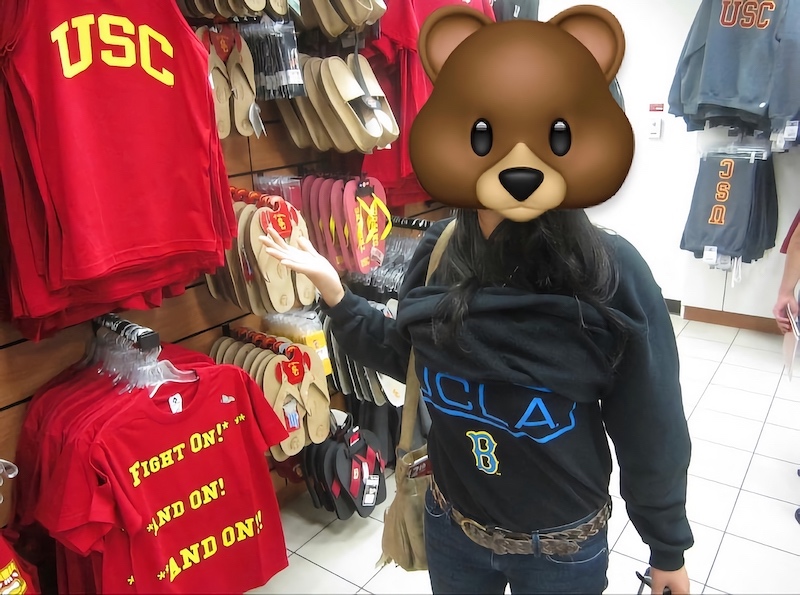
Sophomore me visiting the USC Bookstore on a high school field trip in May 2012. The irony is not lost on me that I now have the sweater in the background, which I am currently wearing while writing this.
When applying to OT school, a part of me still held the notion that private = elite and public = diversity, but that myth was quickly dispelled when I met my classmates, who are each so different and unique in their backgrounds, life perspectives, age, appearance, and interests, thanks to the holistic admissions process implemented at USC Chan. The insights shared by my classmates both in and out of the classroom have been quintessential to facilitate my learning as I continue to develop my clinical identity. I feel an immense sense of pride knowing that my classmates will be entering practice as some of the most culturally responsive clinicians this field has to offer and that their clients and future generations will be able to see themselves in their providers.
My family always emphasized that education is an investment to give myself the best chance at life, so when deciding which program to attend, what better is there than the best? I could think of no better place to invest in myself than at USC Chan, which, in case you forgot, is the #1 occupational therapy program in the nation, and it shows. It’s pretty surreal to walk the halls of the Center for Health Professions (CHP) and know that it’s the birthplace of sensory integration, occupational science, Lifestyle Redesign, and so much more. Occupational therapy students all over the world are learning through textbooks written by the same professors you get to see face-to-face everyday. Since starting this program, it’s been clear that our faculty, staff, ambassadors, student leaders, and alumni are committed to fostering a space where the next generation of occupational therapists can both advocate for our profession while challenging it to change to meet client needs.
Undergraduate Degree vs. Graduate Degree
The pursuit of my undergraduate degree was filled with twists and turns regarding what career I wanted that degree to lead to — pediatrician, lawyer, software engineer, teacher, and at one point, even paleontologist! I am always amazed (and slightly jealous) when I hear Bachelor’s to Master’s students share why they chose to pursue OT when they were a senior in high school, because I didn’t know about OT until I was 20. While I don’t regret my journey because it’s what led me here today, I will say school was so much harder when I didn’t know what I was meant to do. It was also so much harder when I couldn’t imagine myself ever using organic chemistry or multivariable calculus in my career, yet still had to take those classes in order to get my degree. To this day, the fact that I know how to draw molecular structures using benzene rings or chair conformations has not served me. Not once!
Entering graduate school provided an opportunity for a clean slate. I was able to start over as a student at a new school but this time, as a student with a strong understanding of what I wanted while taking courses focused on what I was interested in. By acknowledging that all of the content I learn in the classroom could be applied to practice, being a student has become a more engaging and meaningful experience.
So, USC or UCLA?
This question is hard to answer because ultimately, I am so thankful to both. My experiences at UCLA led me here to USC, where I find myself growing professionally and personally everyday. Both allowed me to be close to home and near my family, who I wouldn’t be here without. At one, I was able to identify my weaknesses and at the other, take a strengths-based approach. This past weekend, I showed my friends Silvia and Vanessa around UCLA, where we sat next to Janss Steps and talked for hours.
While walking the same paths I used to take to class, I remembered how I felt there when the thought of becoming an occupational therapist seemed like a distant, unattainable dream because I couldn’t see past who I was on paper — just another GPA, GRE score, and 1000 words. And becoming a USC Chan occupational therapist? Dream on.
Look at you now. Fight, fight, fight on. 💙 🐻 💛 ✌️ ❤️
⋯

The Giving T(e)ree(sa) ⟩
October 25, 2021, by Teresa
Classes Life Hacks What are OS/OT?
Heyyy, besties! So the moment we enter Q4 on October 1, I start thinking about giving season because not to brag, buuut . . . I take a lot of pride in that (I believe) I give fantastic gifts. Whether big or small, I always try to make sure my gifts show people I was really listening to them when they shared with me that they’ve been wanting “X” or are really into “Y.” My top love languages are “quality time” and “physical touch” so you can imagine how much ya’ girl struggled throughout the pandemic, I’m not going to lie. But “gifts” became a welcome . . . well, gift.
In OT 405: “Foundations of Occupation” last summer with Dr. Halle, we learned that occupational therapy is rooted in the Arts and Crafts Movement but that our OT-founding queen pointed out that “handiwork alone was insufficient” (Slagle, 1930, p. 271). Then in the 1961 Eleanor Clarke Slagle Lecture, Dr. Mary Reilly shared the famous quote, “[Wo]Man through the use of [her] hands as they are energized by mind and will, can influence the state of [her] own health” (Reilly, 1963, p. 2). I know, I know — what is this, another lecture? But these things really stuck with me because it gave a definition to the calmness and serenity I had felt my entire life when crafting.
Over the past year, one of my favorite occupations has quickly become making things with my Cricut and I just feel the need to clear the air because whenever I say this, people are like “. . . 🦗???” Okay, NO — it’s a machine that can make intricate cuts on paper, cardstock, vinyl, etc., and allows you to make your own personalized crafts.
It just so happens that in OT 405 last summer, I was placed in the same group with Alyssa Matlosz, who’d become my fellow student ambassador and more importantly, one of my closest friends in the program. She was the first facilitator for our group and in relation to her week’s topic of Progressive Era Influences on the founding of occupational therapy, she ended with “I’m just like my country — I’m young, scrappy, and hungry — and I’m not throwin’ away my shot” and I thought . . . Did we just become best friends?
So it only made sense that on her birthday this year, after a year’s worth of iconic Zoom moments . . .
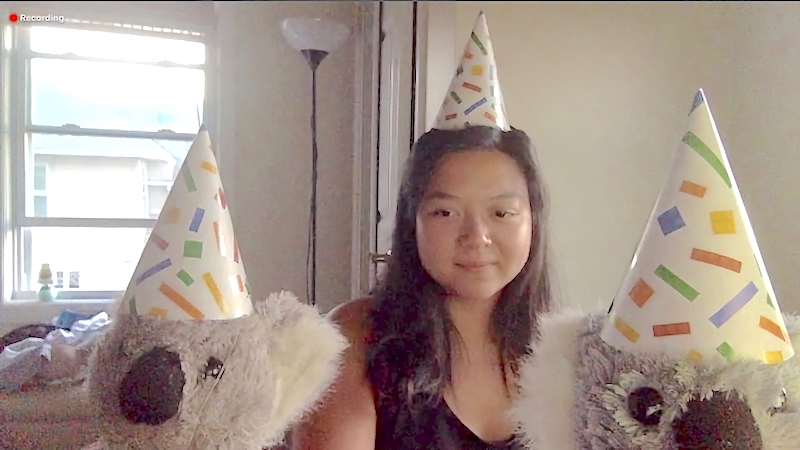
I truly do not even know how to begin to explain this, so please take it for what it is
. . . That I’d circle back to OT 405 and our shared love of “Hamilton: An American Musical” — a nod to the foundations of our friendship.
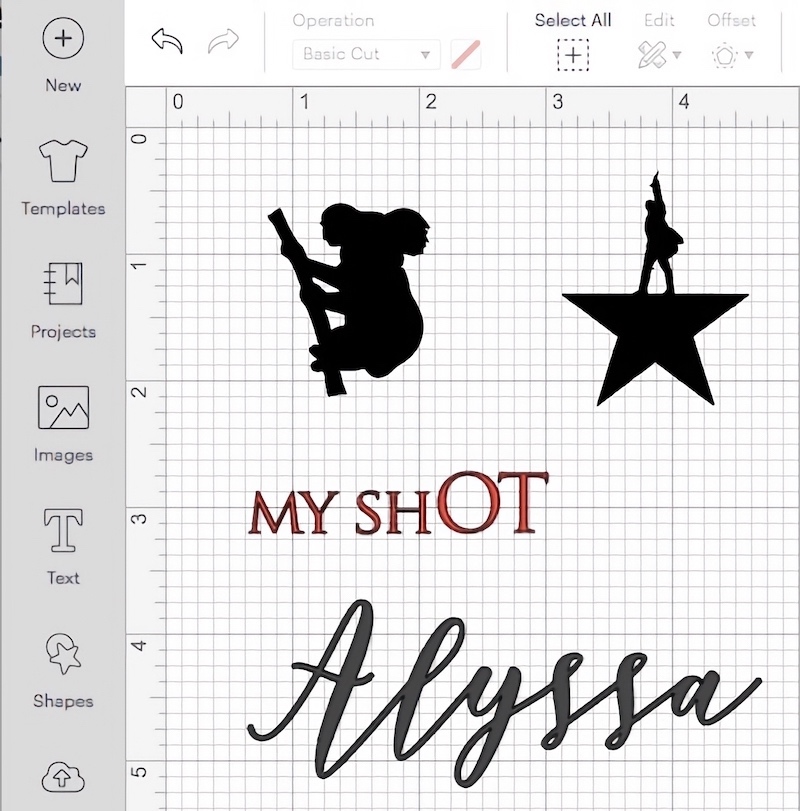
The designs I created on the Cricut Design Space app
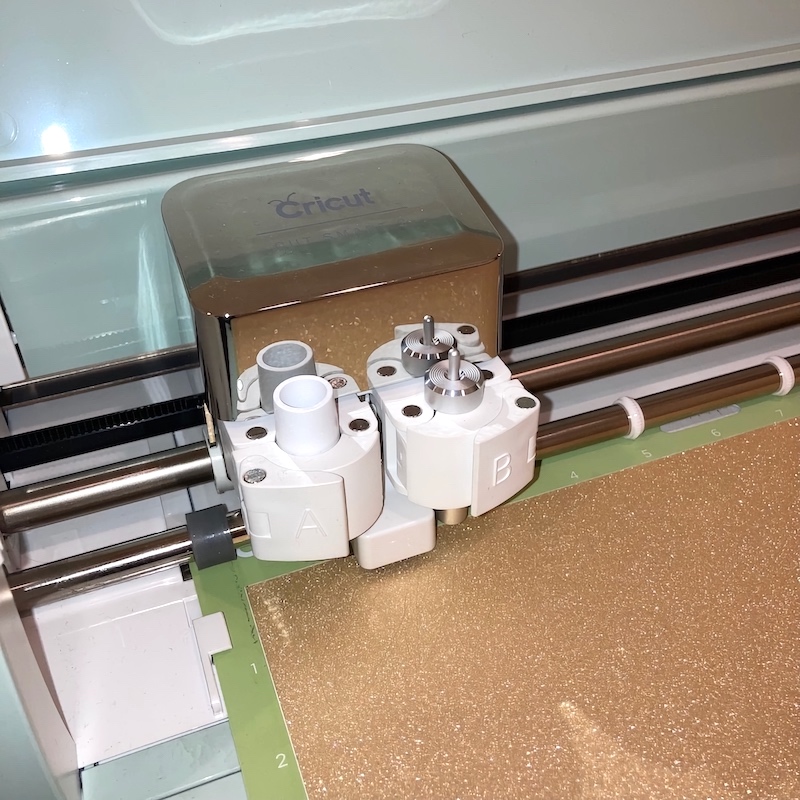
I selected the vinyl material I wanted to use, I arranged it to the cutting mat, I arranged it into the Cricut. (I arranged the menu, the venue, the seating!)
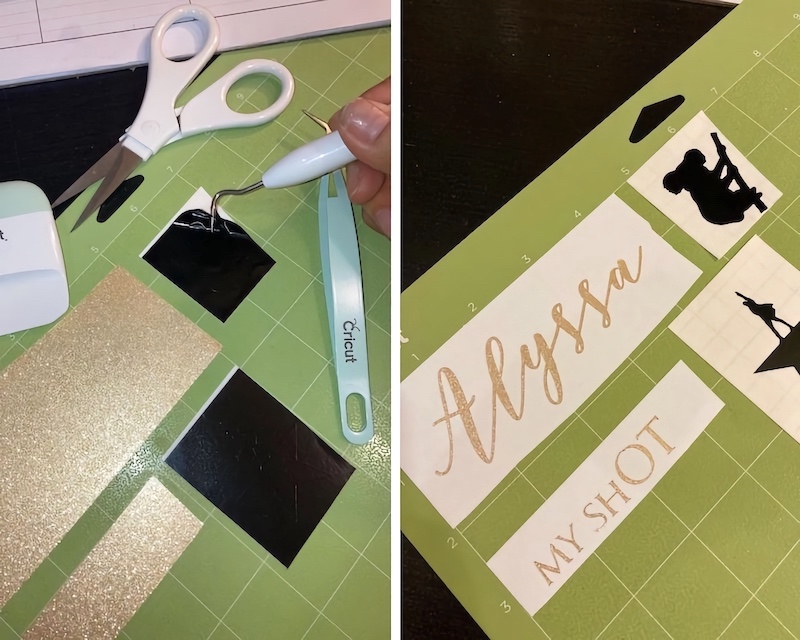
Left: This process is called “weeding,” where you extract the cut by removing the excess vinyl. Right: The finished vinyl cuts ready to be transferred onto the surface I choose using transfer tape!
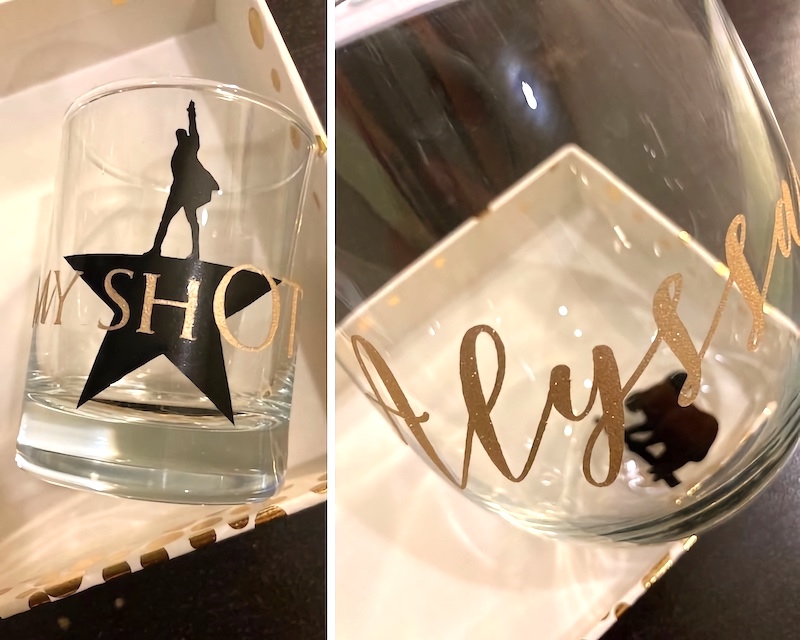
Left: Honestly, I’m pretty proud of this. Please, no one ever throw away their (sh)OT. Right: Lights are overrated, there should be a koala at the end of every tunnel.
I made these gifts during a week that, truthfully, I did not have time for. In between assignments, exams, deadlines, and applications, I was feeling overwhelmed and to be completely honest, I couldn’t remember the last time I had done something unrelated to school. So instead, I took a break and powered up the old ‘Cut. Something I really enjoy about the therapeutic process of crafting is that not too long ago, you just had a concept you were brainstorming in your head and now it’s a tangible, real thing you brought to life. I’m not just talking about physical items you create with your hands, either. You can “craft” anything — an essay you wrote last week that you’re really proud of, a flyer you made online to promote an event, a photo you captured to add to your carefully curated Instagram post, a blog you’re writing about what everyone initially thought was your love for insects. You took an abstract idea and introduced it into the world and if your mind can do that, think of all the things you’re going to do in the future. What a wonderful gift for this world to look forward to — the promise and hope of the products of your creativity and ingenuity that are yet to come.
There is also something beautiful to be said about an item you make with your hands. I spent hours on this gift, but each moment was such a mindful experience. How could you not say crafting falls under OT? From the fine motor skills it takes to handle tools and delicate material, to the executive functioning required to sequence tasks, to the visuoperceptive skills needed to locate and work with everything, to the social connectedness you feel in making the activity personalized . . . the list goes on and on. And then being able to give the end product to another person and in doing so, indirectly saying, “I made this for you because I care about you. But in making it, I was able to sit down and take time away from my stress, so even though I care about you . . . I care about me, too.”
Is there any gift greater than that?
I have the honor to be . . .
Your obedient servant,
T dot Pham
References
Reilly, M. (1963). The Eleanor Clarke Slagle: Occupational Therapy Can Be One of the Great Ideas of 20th Century Medicine. Canadian Journal of Occupational Therapy, 30(1), 5–19. https://doi.org/10.1177/000841746303000102
Slagle, E. C. (1930). Address to graduates. Occupational Therapy and Rehabilitation, 9, 271–276.
⋯

Dancing In the Rain ⟩
September 15, 2021, by Teresa
In the Vietnamese language, there is a phrase to offer your condolences to someone when a loved one passes — “chia buồn” — which roughly translates to, “I share in your sadness.” I’ve always found it poignant and have yet to find a phrase in English which can succinctly convey the same sentiment; that if the weight feels too much for one person to bear, please allow me to help you carry it.
This past summer, my grandpa passed away, peacefully and surrounded by loved ones after many years of suffering many strokes. Recounting his life, I realized I had known him as ill for more years of my life than I had not. Growing up, most of my interactions with him existed within the confines of a skilled nursing facility. This past summer, I was also completing my first Level II fieldwork experience in a skilled nursing facility.
During his celebration of life, my family went around the room sharing stories about grandpa. After my dad retired, he took upon the role as an informal caregiver to my grandpa and shared how much grandpa hated my dad’s visits to the nursing facility because he knew that meant it was time for a bath. My mind went, “OT!” but everyone took the light-hearted story for what it was and laughed, including myself. A few weeks later during fieldwork, I was notified that a family member wanted my patient to work on bathing during OT that day.
My patient did not want to work on bathing during OT that day.
They were protesting against the task, bargaining with me, and apologizing for how their disability was inconveniencing my work. I thought of my grandpa and how I would want a therapist to approach the situation if it was him. In places like skilled nursing facilities, there is so much loss of control. People have little to no control in their routine, what and when to eat, what medications they take, and how quickly (or slowly) their body is changing. So when a bright-eyed young OT student comes knocking on their door, asking if they want to take a bath, they say “no” — and you let them, because it returns just a tiny sliver of control to their life.
On several occasions, concerned family members entered the rehab gym with questions about their loved one’s progress during therapy. While others avoided eye contact so as not to get flagged down with questions, I’d approach them and provide updates as best I could. Afterwards, therapists would say to me, “You’re a student — you didn’t have to do that” to which I would reply, “I wanted to.” Just as much as I want to share in victories with patients and their families, I want to share in their sadness with them as well because it’s how I would want my own loved ones to be treated by providers.
Dr. Rafeedie often says how “occupational therapists teach people how to dance” but I’d like to add a stipulation — that sometimes, we teach people how to dance in the rain. That sometimes, in even the bleakest of places, you can teach people how to flip their outlook on life, flip the way they move and feel, and flip the way the system works because as occupational therapists, you’re well-equipped to. OTs possess the impeccable ability to take an unfortunate situation and turn it into something wonderful.
I lost my grandpa this summer yet somehow, I still saw him a lot. I saw him through my patients and the cheesy jokes they’d crack during our sessions. When they encouraged me to work hard in school and finish strong, I heard my grandpa cheering me on. On their families’ faces, I saw my own family’s faces — the looks of desperation, of encouragement, of sorrow, of hopefulness. To whoever is reading this with a heavy heart: I share in your sadness with you, whatever it may be. The rain is clearing and the sunshine is coming, I can feel it. Let’s dance.
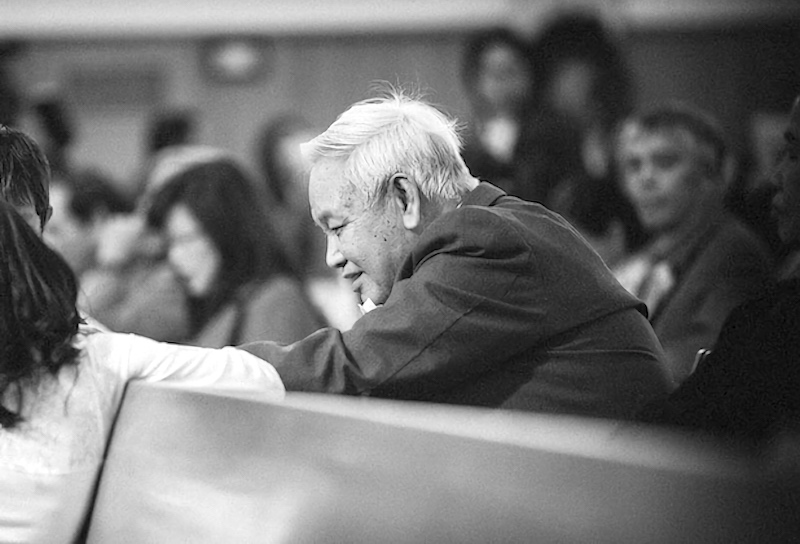
In loving memory of Thomas Dương Đức Thanh
⋯

How Much Time Do You Have? ⟩
September 2, 2021, by Teresa
The most interesting thing I’ve experienced this past year is that the more I learn about occupational therapy, the more difficult it is for me to explain it to others. At least not in a minute-long elevator spiel. Rereading my admissions essays when applying to OT school, my definition of “occupation” is packed into a box, tied neatly with a bow on top. However, if presented today with the question of, “Why did you choose to pursue occupational therapy?”, I would return with another question, “How much time do you have?” How do you even begin to explain why and how much you love, what you believe to be, the most incredible profession to ever exist? Well, here’s my attempt.
My parents arrived in America without two pennies to rub together but have always emphasized to me and my older siblings how our existence on Earth means nothing without generosity, a sense of genuine responsibility in the well-being of others, and dedication to helping people. From these values, I witnessed my oldest brother pursue a career in public service and marry my sister-in-law, who became a (USC-bred!) Doctor of Pharmacy in oncology. My older brother became a physician assistant (now, associate) specializing in urgent care and cardiology after five long years of coming home in the middle of the night while he worked as an EMT. My older sister (also USC-bred!) now organizes various clinical research trials to get FDA approval for experimental interventions. As proud as I was of their achievements, I was concurrently experiencing inner turmoil — what is going to be my contribution to the world? How am I going to help people?
When I was eight years old, my grandpa suffered his first stroke. For the next sixteen years until his passing this past summer, he would experience several more and became more medically complex with each one. My interactions with him didn’t resemble the nuclear grandpa character I saw in books and movies as a child. Instead, they occurred within the walls of nursing facilities, in the gym we constructed in his garage for his exercises, in the supermarket when I learned to read nutrition labels at an early age so I could hold him accountable for his diet.
In high school, I always spent too much time on arts and crafts. If a class project required a poster presentation or I was campaigning for a student council position, you could find me surrounded by markers and covered in glitter and paint all weekend. Then my brother would barge into my room and say, “Why are you wasting your time on this? Go do some math or something.” (For reference, math has always stressed me out. I blame times tables.) But I didn’t care. This was my happy place. I felt in control, the possibilities were limitless, and my mind was at peace.
In college, I worked at the UCLA Lab School as a teaching assistant for second-graders. My supervisor often assigned me to provide specialized attention to students with learning disorders and developmental disabilities, noting that I had a great deal of patience and a keen sense of empathy which allowed me to match students’ needs. On a fateful day in 2017 where time and circumstance met, a parent suggested the magic words “occupational therapy” onto my wanting ears and changed the trajectory of my life forever. I never believed that a profession like this existed — one that challenges areas of myself which require growth yet puts all the best parts of me to use. The part of me that my parents taught to help others, that practices compassion toward grandfathers and second-graders alike, and all while embedding creativity into the therapeutic process.
⋯






